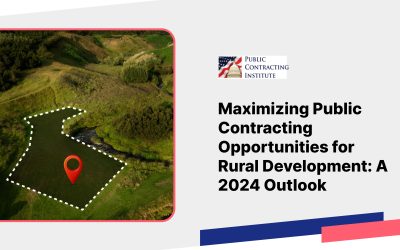One trillion dollars. That’s trillion with a capital “T”, folks. Our acquisition community is responsible for managing that amount and more on an annual basis through contracts, grants, and loans. In contractual expenditures alone, the figure is in the neighborhood of $530 billion per year. We as taxpayers might presume that these public servants have a systematic training program to prepare them for future job responsibilities. Unfortunately, we the taxpayers would be wrong.
The current aversion to investing in federal workforce training can be linked to the misguided behaviors of a few civil servants who, within the last two years, spent upwards of $7 million dollars on extravagant, much-publicized conferences for their employees. As a result, agencies have nearly eliminated training budgets (which includes travel for training purposes) for fear of congressional reproach. This is an unfortunate reaction considering many experienced members of the acquisition workforce are retiring and others are exiting for the private sector. Given today’s fiscal environment, training and developing the acquisition community is more important than ever.
And this is exactly why it is time to reexamine how we are training and developing this community. For decades, training in an organizational sense emphasized time in the classroom; 8 hours of class time resulted in 8 hours of learning. But there are signs this formula is changing in our educational system (see the Khan Academy) and throughout corporate America (see Zappos Insights). Federal acquisition officials should take advantage of this paradigm shift by accepting the notion that training hours in a classroom are an insufficient proxy for learning and reconsider the formal, structured approach to workforce development.
The paradigm shift is best exemplified by the fact-finding power of a Google search. When today’s professional can research, and answer, a question in a matter of minutes, the idea of training as a method of committing fact to memory seems unnecessary. Rather than “pushing” information to the learner (a defining characteristic of the formal, structured approach) social and experiential learning requires participants to “pull” information from available resources and apply facts in a problem-solving context. Structured lessons are then used to address questions that arise during the problem solving exercises, thereby increasing the relevance of formal lessons to the learner’s needs.
A “pull” focus requires a learning environment that promotes access to information and provides opportunities to apply that information to common challenges. In social and experiential learning environments, participants are motivated by the challenge of solving realistic problems to pull information from available resources and apply that information to the challenge at hand. Time in the classroom (and out of the office) is reduced because instructors spend less time “pushing” information and more time guiding the learners to the information required to construct solutions.
Take just two examples out of the PCI playbook. First, many of our courses break up the tedium of the day by organizing small groups of students to solve real-world contracting challenges. The groups then “share and compare” their solutions under the guidance of an instructor who challenges them to think critically about their facts and findings. It is these kinds of problem solving sessions where students really learn—from other students, from the instructor, and from themselves! They discover the confidence to analyze and solve an issue by applying the knowledge gained from the seminar to the problem at hand. And just as importantly, they discover how effective problem solving in government contracts can be when they use a team approach.
Second, PCI’s virtual classroom training promote a social and experiential learning environment by incorporating student-to-student and student-to-teacher dialogue, graphics, educational chat rooms, storytelling, humor, and gamification principles. The interactivity of the virtual environment promotes engagement and avoids the monotony of all-day classes that produce knowledge overload and reduce the future application of learning to on-the-job tasks. The virtual nature of these courses also enables a diverse student population, both from an experience and geographic standpoint but also through a combination of public and private sector practitioners. Furthermore, virtual courses are a cost-effective option for organizations seeking to limit travel expenses and time out of the office.
By adopting this paradigm shift and incorporating social and experiential techniques into workforce development, PCI is helping to increase the focus on application and bring all members of the acquisition community together in the learning environment. This in turn will strengthen the bond between these participants both within government and amongst its industry partners. If the results are less cost and more learning, then this is a formula we cannot afford to ignore.

